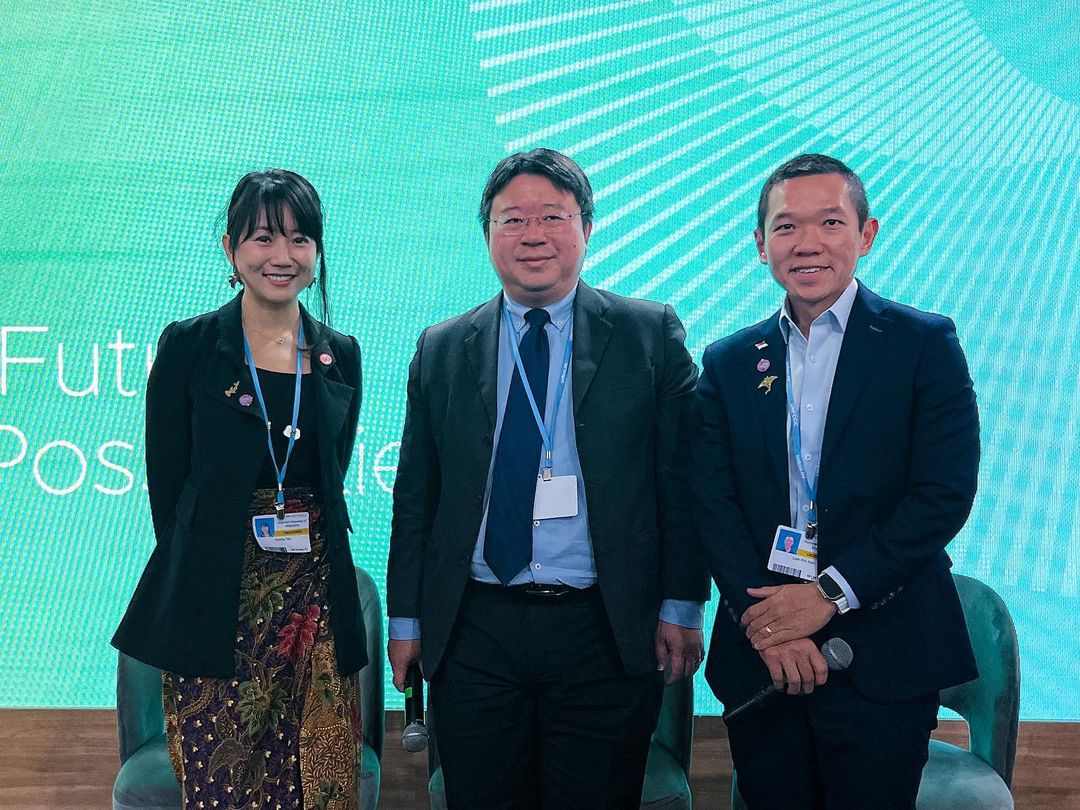NUS at COP27: Launch of new S$15 million research programme to improve the credibility of nature-based carbon projects in Southeast Asia
November 14, 2022

A network of forest carbon monitoring plots will be established across Southeast Asia under a new S$15 million research programme, launched on 10 November at the United Nations climate change conference COP27 in Sharm El-Sheikh, Egypt.
The five-year research effort is led by the Centre for Nature-based Climate Solutions (CNCS), a research centre of NUS’ Faculty of Science. Called the Carbon Market Integrity Research and Development Programme Singapore, or Carbon Integrity SG, it will provide a better estimate of the carbon stocks locked up across different habitat types across Southeast Asia, including rainforests, mangroves, freshwater swamp forests, peatlands and deciduous forests, said Professor Koh Lian Pin, Director of CNCS.
“This will give investors greater confidence in the quality of nature-based carbon projects, and help to promote the conservation of these important habitats,” added Prof Koh.
Demand for carbon credits from nature-based projects, such as a reforestation project, is growing as countries and companies look to buying offsets to reduce their carbon footprint. One carbon credit represents one tonne of planet-warming emissions removed from the atmosphere. Buyers of such credits can claim the emissions reductions as their own, enabling them to meet their climate change targets.
However, most estimates on natural carbon storage by forests are currently made using global or pantropical models.
“This is a one-size-fits-all approach that may not provide the most accurate picture of carbon storage in Southeast Asia’s diverse habitats,” said Mr Jose Don De Alban, a research associate at NUS CNCS. This lack of accurate estimates on the carbon stocks could deter investors from establishing such projects, since there is less certainty about the amount of carbon credits that can be sold. Investors may instead opt to use the land for other uses, such as cutting down forests to grow cash crops like oil palm, where their return-on-investment is more certain.
“Carbon Integrity SG will help to establish carbon estimation models for various tropical habitats, including rainforests, mangroves, freshwater swamp forests, peatlands, and deciduous forests, within Southeast Asia,” Mr De Alban added.
Carbon Integrity SG is funded with an initial S$10 million from Singapore’s National Research Foundation (NRF) and S$5 million co-funding from NUS. It builds on earlier research done at CNCS, which leverages satellite data and existing datasets to map out where nature-based projects in Southeast Asia can be developed as potential sources of high-quality carbon credits. The Carbon Prospecting Dashboard, launched in September 2022, also enables users to calculate the estimated yield of carbon credits and their financial return-on-investment, based on user-defined assumptions such as project duration, costs and carbon prices.
The new programme will involve CNCS researchers working with partners - including other universities, government agencies, and corporations - to establish monitoring plots at various natural habitats across the region. Tools such as Light Detection and Ranging technology (LIDAR) will be used to help generate precise, three-dimensional information about the habitats. LIDAR data, as well as other measurements like the girths of trees, will allow scientists to estimate and map the biomass carbon stocks across various forest ecosystems in the region, helping to improve estimates on carbon yield on the dashboard.
Earlier studies at CNCS have shown that the Asia Pacific region has the highest concentration of the most profitable carbon projects, which can generate returns on investment at close to US$25 billion per year. These carbon projects would not only avoid 835 million tonnes of carbon dioxide equivalent each year from deforestation, almost half the emissions of Indonesia in 2018, but also provide other co-benefits. Protecting these forests as nature-based carbon projects could help with water purification services, food security and biodiversity conservation.
“CNCS looks forward to working with partners across the region on Carbon Integrity SG,” Prof Koh said. “By tapping Southeast Asian expertise in forestry, geospatial technology and other sectors, we can tailor global models to our unique context. The collaborations will help to improve the credibility of nature-based carbon projects in Southeast Asia, which is home to many natural ecosystems including rainforests, peat swamps and mangroves.”
By NUS CNCS
Read the press release here.
NUS will be hosting various events and panels at COP27 from 6-18 November 2022. Catch the action via livestream from the Singapore Pavilion in Sharm El-Sheikh, Egypt, here.
To find out more about how NUS is contributing to global action on climate change, read NUS at COP27: Why the annual UN climate summit matters.
Original article from NUS News

